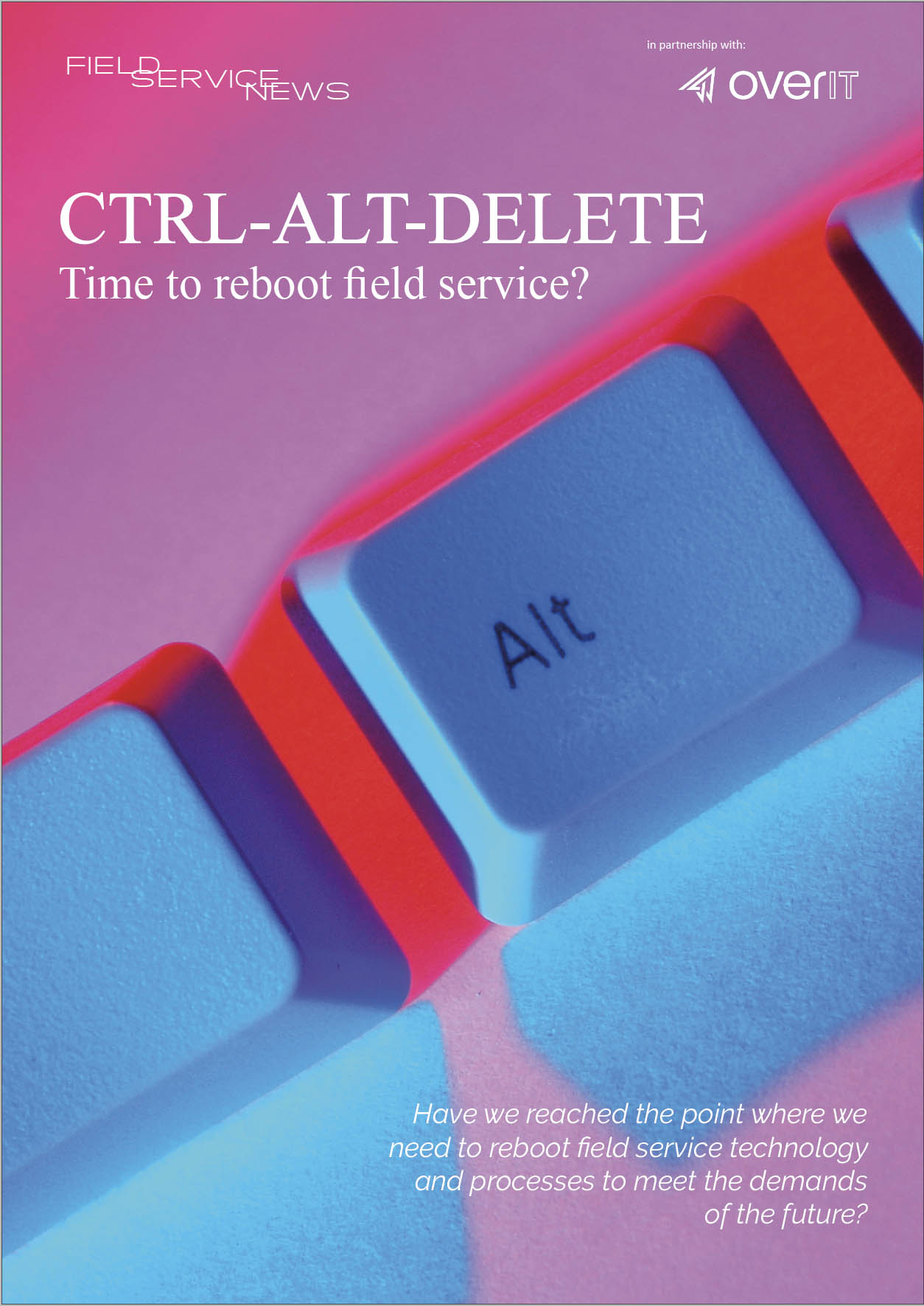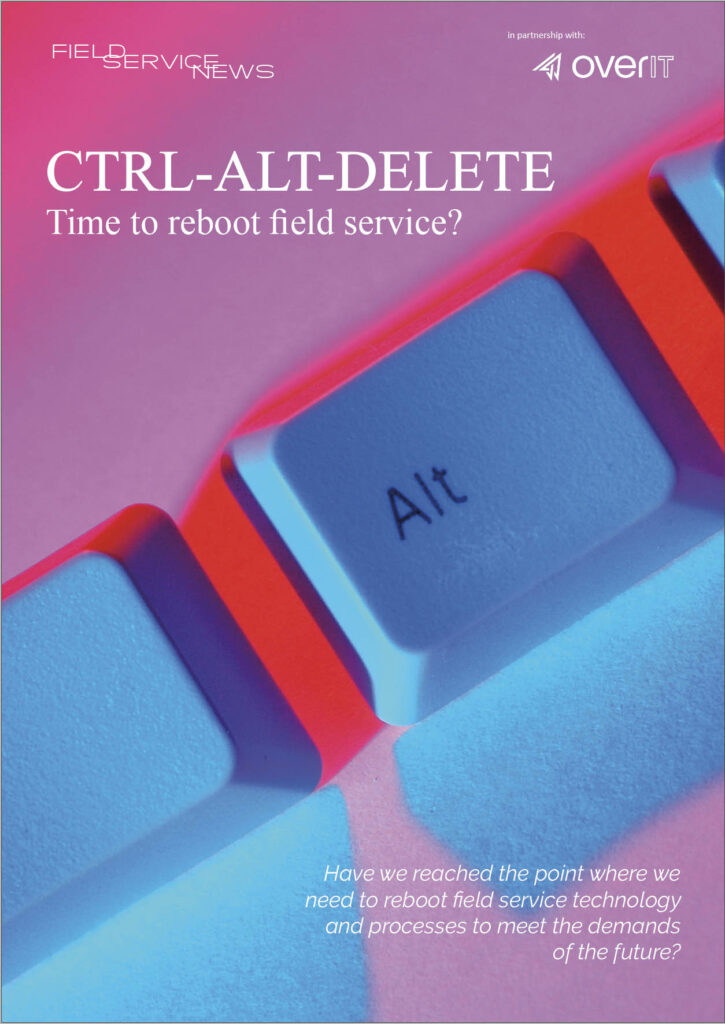Our industry will only become more data driven and we need Artificial Intelligence to make it work
We are undoubtedly now living and working within an age of data. In almost every aspect of our working and personal lives, data is at the heart of how we interact with organisations – and in the field service sector, the data touchpoints from assets in the field have grown incredibly across the last decade.
That level of data is only set to increase and increase exponentially.
The future of our industry is set. We are already a data-driven industry, and in the coming years, being able to combine the vast amounts of customer and asset data to drive genuinely proactive service operations is going to be how we all approach service delivery.
This, of course, opens up the doors for service providers to finally make the transition that many in the field service sector, including Field Service News, have been pointing to for over a decade.
It is a transition that sees us finally see the swing from traditional break-fix methodologies to a more servitized, data-driven approach.
It is a transition that will see proactive service becoming the lion’s share of service calls. It is a transition that is becoming increasingly inevitable, and being blunt; it is a transition that will be painful for many organisations if they continue to persevere with their current legacy systems.
As we stated within the open section of this white paper, managing the data flow in and of itself will be a challenge.
To reiterate the point made earlier, in this regard, we can look towards increasing integrations that are often available ‘off-the-shelf’ within modern next-gen solutions such as OverIT that can ease the communication between core systems within the operation and the FSM solution.
These can allow the service organisation to access key technology such as AR and GIS natively within their service system without rebuilding the broader business technology infrastructure.
Similarly, there is much promise in the multi-tenant approach to data that allows for one central system of record to provide data access across multiple applications and locations.
However, even with the easy and seamless flow of data across disparate systems, the sheer volume and variety of data being created today means that if we are to derive the meaningful and actionable insights required to adopt a genuinely data-driven approach, we need to have the tools in place to be able to handle such data demands.

![]() Data usage note: By accessing this content you consent to the contact details submitted when you registered as a subscriber to fieldservicenews.com to be shared with the listed sponsor of this premium content OverIT who may contact you for legitimate business reasons to discuss the content of this briefing report.
Data usage note: By accessing this content you consent to the contact details submitted when you registered as a subscriber to fieldservicenews.com to be shared with the listed sponsor of this premium content OverIT who may contact you for legitimate business reasons to discuss the content of this briefing report.
This content is available for FSN PRO members and also for a limited period for FSN FREE members. Please make sure you are logged in to access this content.
Not yet subscribed? Instantly unlock this content and more on our forever-free subscription tier FSN FREE
Join FSN FREE today!
Subscribe to our forever-free subscription tier FSN FREE by completing the brief form below and get instant access to this resource plus a selection of premium resources every month.
[pmpro_signup submit_button="Get access now!" level="1" redirect="referrer" custom_fields="true" short="true"]
"Just like oil, data in and of itself essentially holds no intrinsic value. It needs to be processed and refined for the value it undoubtedly holds to be unlocked. To achieve this, we need to turn to AI and machine learning..."
The often-cited definition of what constitutes Big Data is referred to as the four V’s.
- Volume – the overall size of the data sets
- Velocity – the speed at which data is created
- Veracity – the trustworthiness of the data
- Variety – the mix of data across structured, unstructured and semi-structured.
Additionally , a fifth ‘V’ has been later added to this list, Value.
Take a moment to think about the data your organisation currently produces across asset, engineer, and customer data and ask yourself if you feel it sits within the above definition.
For most field service organisations, the answer is probably yes. Even for those readers that may not answer yes today, how far into the future do you think it will be before your organisation reaches a point where your data sets will fall within the definition of Big Data?
While at the technical level, Big Data and Artificial Intelligence (AI) are separate disciplines, the simple fact is that Big Data and AI are completely interdependent for us at the operational level.
Big Data could be viewed as the fuel for driving us towards truly data-driven service operations. Still, it is the AI that takes that fuel and creates insights from these vast data oceans that would otherwise be impossible to navigate.
The common phrase is that data is the oil of the 21st century.
This once neat, throwaway sound bite is now becoming increasingly self-evident. Like oil in the previous century, data is pervasive across all industries. It is the commodity of the future and is driving change in every sector.
However, just like oil, data in and of itself essentially holds no intrinsic value. It needs to be processed and refined for the value it undoubtedly holds to be unlocked. To achieve this, we need to turn to AI and machine learning.
For us in the field service sector to truly see the potential we are aiming for, this needs to be undertaken within the primary system that our engineers and support staff are utilising every day.
Native AI and machine learning tools are a hallmark of next-generation solutions.
Whether it is AI-powered triage helping drive resolution at the contact centre, AI-powered knowledge bases supporting the engineer on-site or AI-powered data tagging that allows for more efficient and quicker job completion and reporting – machine learning algorithms are going to become a significant part of field service operations rapidly.
To put it clearly, we need to ensure that we have AI tools, and these tools need to be designed with an understanding of the task at hand. They need to be designed by those who understand field service operations. In short, they need to be native within the FSM.
Do you want to know more?
If you are already a subscriber you can access the report instantly on the ‘read now’ button below. If the button is showing ‘Join FSN FREE’ please log-in and refresh the page.
If you are yet to subscribe simply click the button below and complete the brief registration form to subscribe and you will get instant access to this report plus a selection of premium resources each month completely free.
This content is available for FSN PRO members and also for a limited period for FSN FREE members. Please make sure you are logged in to access this content.
Not yet subscribed? Instantly unlock this content and more on our forever-free subscription tier FSN FREE
Join FSN FREE today!
Subscribe to our forever-free subscription tier FSN FREE by completing the brief form below and get instant access to this resource plus a selection of premium resources every month.
[pmpro_signup submit_button="Get access now!" level="1" redirect="referrer" custom_fields="true" short="true"]

![]() Data usage note: By accessing this content you consent to the contact details submitted when you registered as a subscriber to fieldservicenews.com to be shared with the listed sponsor of this premium content OverIT who may contact you for legitimate business reasons to discuss the content of this briefing report.
Data usage note: By accessing this content you consent to the contact details submitted when you registered as a subscriber to fieldservicenews.com to be shared with the listed sponsor of this premium content OverIT who may contact you for legitimate business reasons to discuss the content of this briefing report.


